Matrix Finite Element
Methods By Energy Minimization


· Write Potential Energy as a
function of nodal displacements: V=V(u)
· Minimize V(u):
· Solve for u
To calculate V(u):
Write the strain and axial force of each member as a function of nodal displacements.

For
Element e connected to joints (a) and (b):


Write the Strain Energy for
each member:



![]() and
and ![]() are the element
stiffness matrix and element displacement vector.
are the element
stiffness matrix and element displacement vector. ![]() is symmetric!!!
is symmetric!!!

In 3D


(Same as it ever
was…)


The Global Stiffness Matrix
The total strain
energy of the truss may be computed by adding together the strain energy of
each element:

It is more
convenient to express W in terms of the global displacement vector, u

Consider a
Two-Member (Two-Dimensional) Truss:



![]()
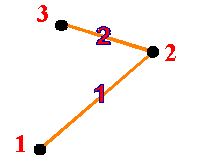
W(1) and W(2)
in terms of the global displacement vector u:
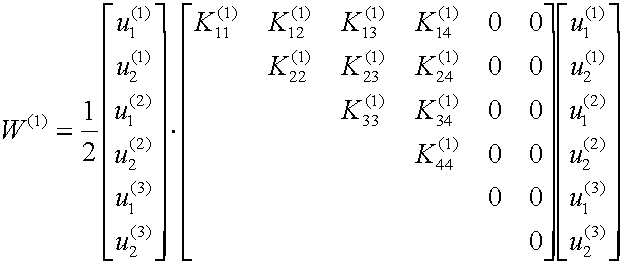
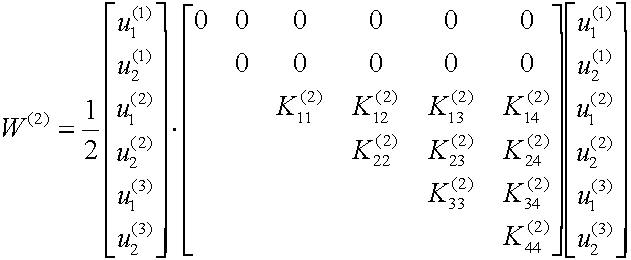
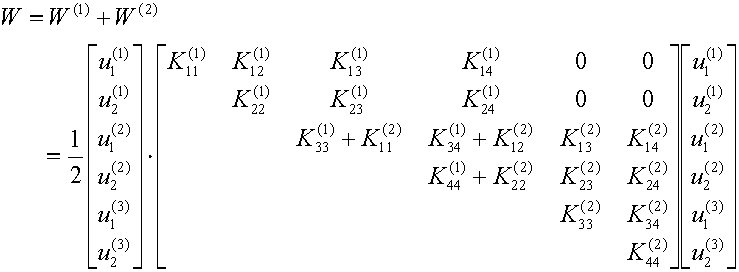

[K] is the Global Stiffness Matrix. It is the sum
of all the element stiffness matrices.
Because the element stiffness matrix is symmetric, the global stiffness
matrix must also be symmetric.
CAUTION:
SOME ASSEMBLY REQUIRED!!!
(Batteries not included)
Bookkeeping:

 The displacement of node #b
in the ei-direction, ui(b) (i=1,2)
is the (2(b-1)+i)th element of the global displacement vector, u:
The displacement of node #b
in the ei-direction, ui(b) (i=1,2)
is the (2(b-1)+i)th element of the global displacement vector, u:

The degree of freedom number assigned to the displacement
of node b in the i-direction is
(2(b-1)+i).
In 3D:  and the degree of freedom number assigned
to the displacement of node b in the i-direction is
(3(b-1)+i).)
and the degree of freedom number assigned
to the displacement of node b in the i-direction is
(3(b-1)+i).)
The global stiffness positioning (2D):
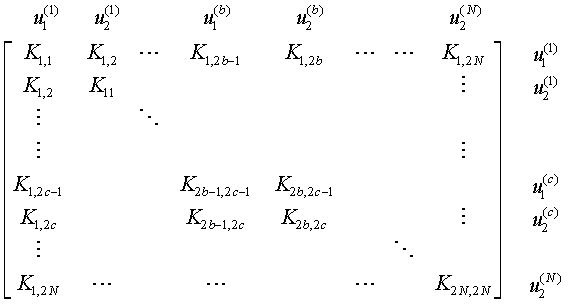
Where do the element stiffness components land?

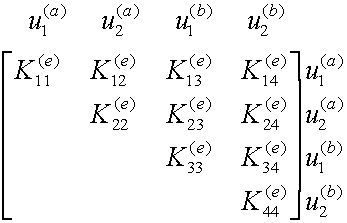

Externally Applied Forces
These are specified by prescribing the node on which
the loading acts and the force vector P.
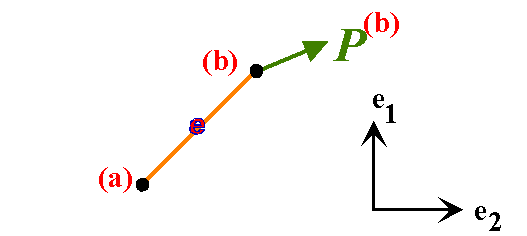
Potential energy
due this load is then
![]()
The total
contribution to the potential energy due to prescribed forces on all of the
loaded nodes is
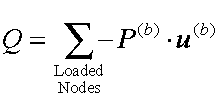
Global residual force vector: r
But of course, we have to
write Q in terms of the global force vector u.
Q=-r×u
ASSEMBLY REQUIRED!!!
Recall
the degree of freedom number assigned to the displacement
of node b in the i-direction is
(2(b-1)+i).
![]()
3D degree of freedom number assigned to
the displacement of node b in the i-direction is
(3(b-1)+i).
![]()
Stay Tuned!!

 Still
to Come:
Still
to Come:
·
Minimize
V[u]
·
Take
boundary conditions into account
·
Solve
for u.
·
Go
back to get element forces and strains.